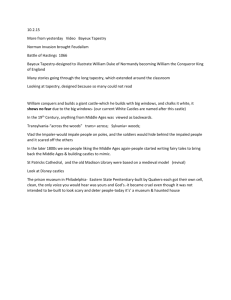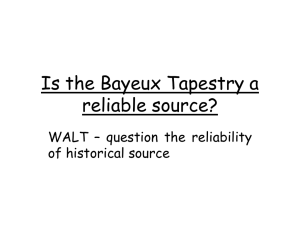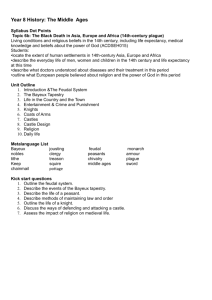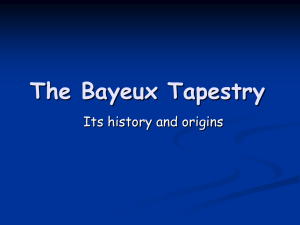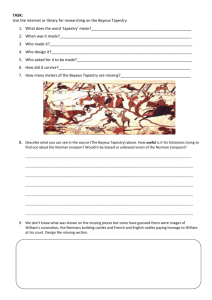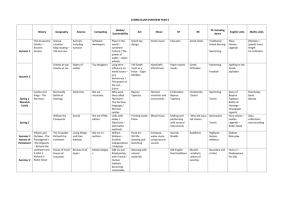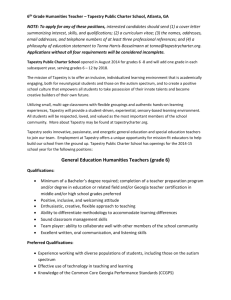Bayeux Tapestry Understanding Strengths and Limitations of
advertisement
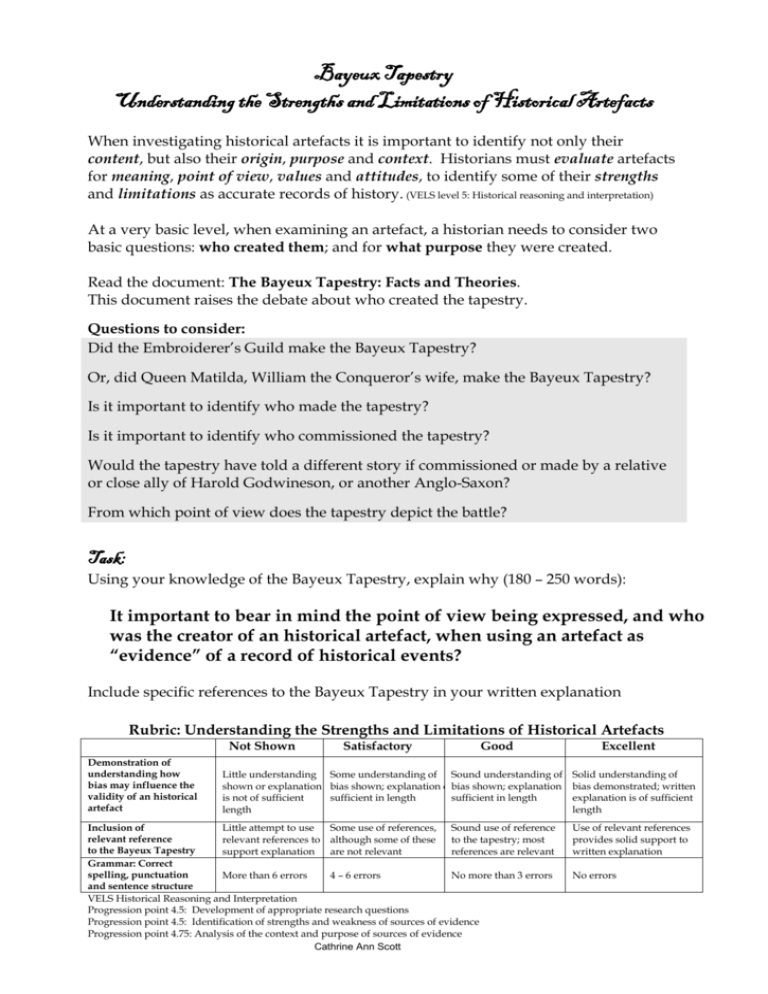
Bayeux Tapestry Understanding the Strengths and Limitations of Historical Artefacts When investigating historical artefacts it is important to identify not only their content, but also their origin, purpose and context. Historians must evaluate artefacts for meaning, point of view, values and attitudes, to identify some of their strengths and limitations as accurate records of history. (VELS level 5: Historical reasoning and interpretation) At a very basic level, when examining an artefact, a historian needs to consider two basic questions: who created them; and for what purpose they were created. Read the document: The Bayeux Tapestry: Facts and Theories. This document raises the debate about who created the tapestry. Questions to consider: Did the Embroiderer’s Guild make the Bayeux Tapestry? Or, did Queen Matilda, William the Conqueror’s wife, make the Bayeux Tapestry? Is it important to identify who made the tapestry? Is it important to identify who commissioned the tapestry? Would the tapestry have told a different story if commissioned or made by a relative or close ally of Harold Godwineson, or another Anglo-Saxon? From which point of view does the tapestry depict the battle? Task: Using your knowledge of the Bayeux Tapestry, explain why (180 – 250 words): It important to bear in mind the point of view being expressed, and who was the creator of an historical artefact, when using an artefact as “evidence” of a record of historical events? Include specific references to the Bayeux Tapestry in your written explanation Rubric: Understanding the Strengths and Limitations of Historical Artefacts Not Shown Demonstration of understanding how bias may influence the validity of an historical artefact Satisfactory Good Little understanding Some understanding of Sound understanding of shown or explanation not bias shown; explanation ofbias shown; explanation is not of sufficient sufficient in length sufficient in length length Inclusion of Little attempt to use Some use of references, Sound use of reference relevant reference relevant references to although some of these to the tapestry; most to the Bayeux Tapestry support explanation are not relevant references are relevant Grammar: Correct spelling, punctuation More than 6 errors 4 – 6 errors No more than 3 errors and sentence structure VELS Historical Reasoning and Interpretation Progression point 4.5: Development of appropriate research questions Progression point 4.5: Identification of strengths and weakness of sources of evidence Progression point 4.75: Analysis of the context and purpose of sources of evidence Cathrine Ann Scott Excellent Solid understanding of bias demonstrated; written explanation is of sufficient length Use of relevant references provides solid support to written explanation No errors
